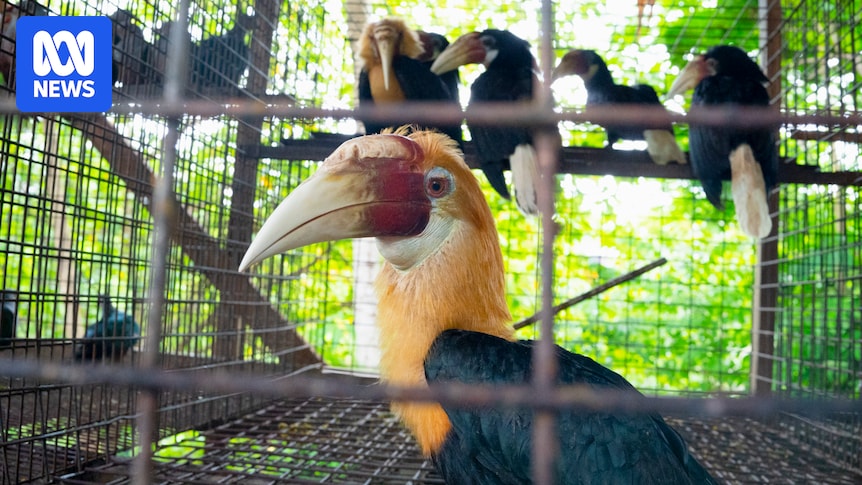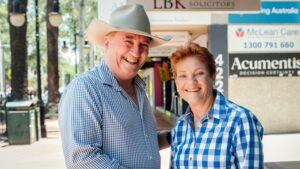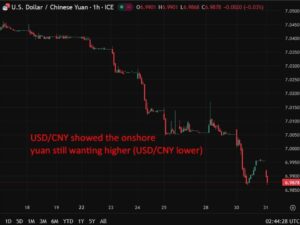
On the outskirts of Honiara, the capital of the Solomon Islands, a row of metal cages clings to the side of a forest-covered hill. Inside, birds screech and shuffle as a large hornbill pecks at the wire with its giant curved beak. Nearby, red and green parrots huddle together, while white cockatoos, their feathers dusted with dirt, await their fate in the global wildlife trade.
These animals are destined for private collectors and exotic pet dealers worldwide. However, a recent suspension by Fiji Airways, citing animal welfare concerns, has left the industry at a standstill. The Solomon Islands is the Pacific’s largest legal commercial exporter of wildlife for the exotic pet trade, a little-known yet thriving industry that supports a vast network of trappers, village buyers, and exporters.
Inside the Wildlife Trade
Angelina Palmer, known as Angie, has been involved in the wildlife trade for over a decade. Moving between enclosures, she checks food bowls and replenishes water, aware that her business is currently grounded due to the airline’s decision. “These are going to Jordan and Malaysia,” she says, tapping gently on the wire to calm a restless bird.
According to the United Nations, over 1,000 live animals are shipped out of the Pacific nation each year, contributing to a global market estimated at over $40 billion annually. However, up to half of this trade is illegal. The industry is now under growing scrutiny, with authorities tightening controls amid concerns over animal rights, wildlife trafficking, and biodiversity loss.
“It’s a big problem,” Angie says. “Not just for me but for all the trappers out in the provinces who rely on this too … that’s how we survive.”
The Impact on Local Communities
Solomon Islands boasts some of the most biodiverse forests in the world. On the south-east coast of Santa Isabel, trappers use fishing lines to ensnare lizards and birds, selling them to village dealers for $SBD100–300 ($18 to $56) each. These are then sent to exporters like Angie in Honiara for $SBD50 per animal.
Brian Pitumana, a local trapper and member of the Sasari Rangers conservation group, explains the challenges. “If you’re lucky, maybe you’ll find one in a day,” he says. “But it’s not easy. You have to sit and wait a long time, and sometimes you’re unlucky.”
Despite the income being significant for communities with few other ways to earn a living, the business remains informal. Trappers catch a dozen or so animals annually, though some may die if not checked on promptly. Conservationists argue that greater regulation is overdue, while those within the business fear the changes’ impact on their livelihoods.
Global Connections and Consequences
Solomon Islands is just one part of a booming global exotic pet market. Each year, tens of thousands of animals from the Pacific are shipped to export hubs worldwide, including Indonesia, where they enter sprawling wildlife markets. In Jakarta, the trade is larger and more public, with animals from various countries.
Indonesia recently introduced stricter laws to combat wildlife trafficking, but enforcement remains a challenge. “Based on other cases, we’ve found many exotic animals were smuggled into Indonesia to supply the exotic pet demand,” says Dwi Nugroho Adhiasto, a wildlife conservationist and criminologist.
“They use passenger ferries from, for example, Papua and then Maluku, and then cruise to the entry point in East Java, to the international seaport and passenger seaport, and then from that point they transfer the animals by vehicles.”
The Future of the Exotic Pet Trade
On the other end of the chain are collectors, primarily based in the United States, the world’s largest market for exotic pets. Samson Michael, a Tennessee-based collector, has dedicated a room in his home to his reptiles, including 11 from the Solomon Islands.
“I always feel bad seeing these animals getting taken out of the wild,” Samson says, acknowledging the plight of local trappers. “They make a very minuscule amount compared to what the animal sells for when it finally does hit the United States’s open market.”
Back in Honiara, Angie watches videos of eclectus parrots speaking English to their owners, feeling a sense of pride. “You’re looking at something that comes from here, from our country,” she says. “You feel proud, like that’s one of our birds from the Solomons and now it’s living with these other people who are really taking care of it.”
The future of the wildlife trade in the Solomon Islands remains uncertain. With increasing global scrutiny and regulatory changes, the industry faces a crossroads. For now, the hornbill in Angie’s care lets out a loud squawk, its fate still hanging in the balance.
This reporting was supported by the Sean Dorney Grant for Pacific Journalism through the Walkley Public Fund.







